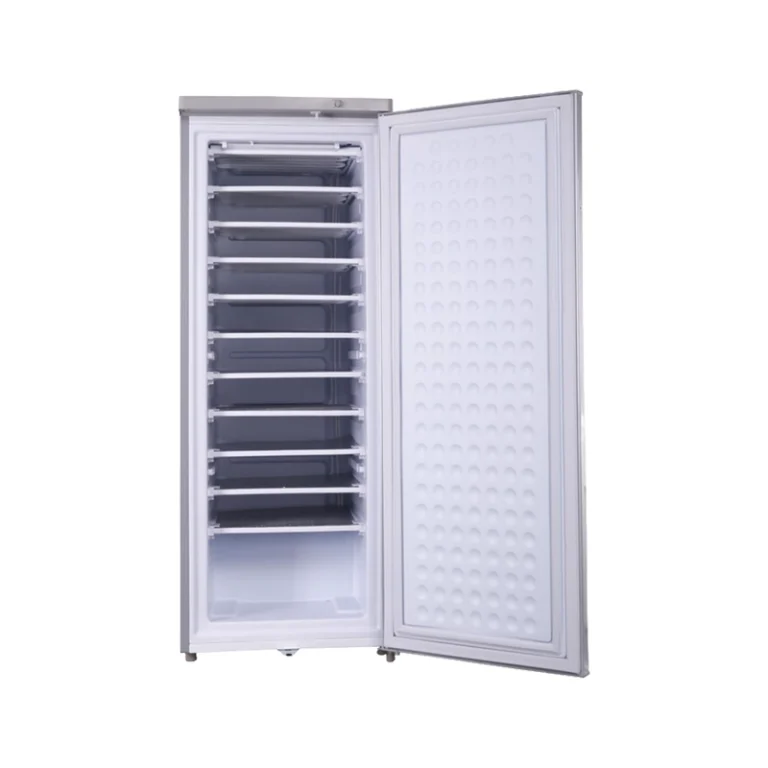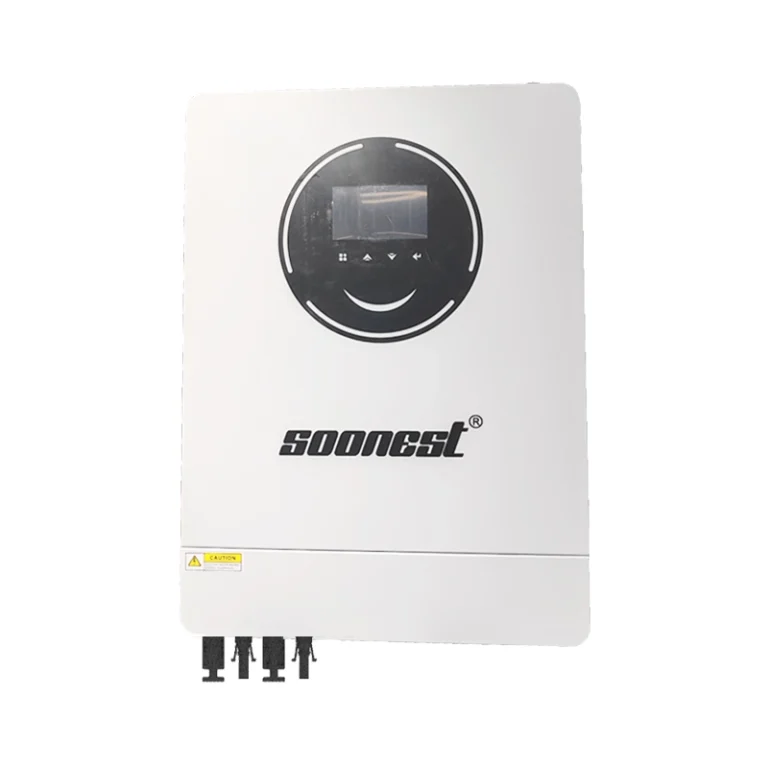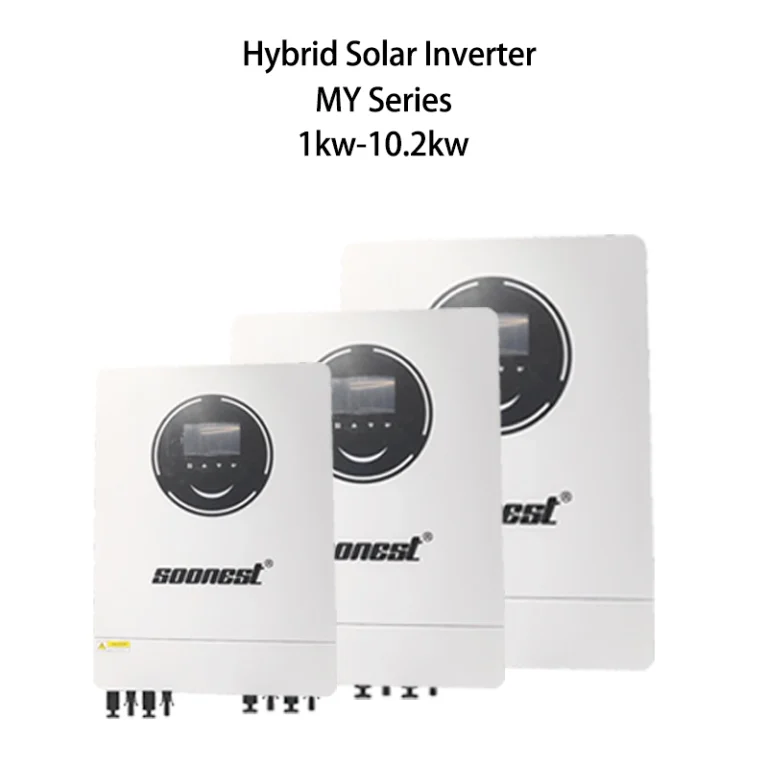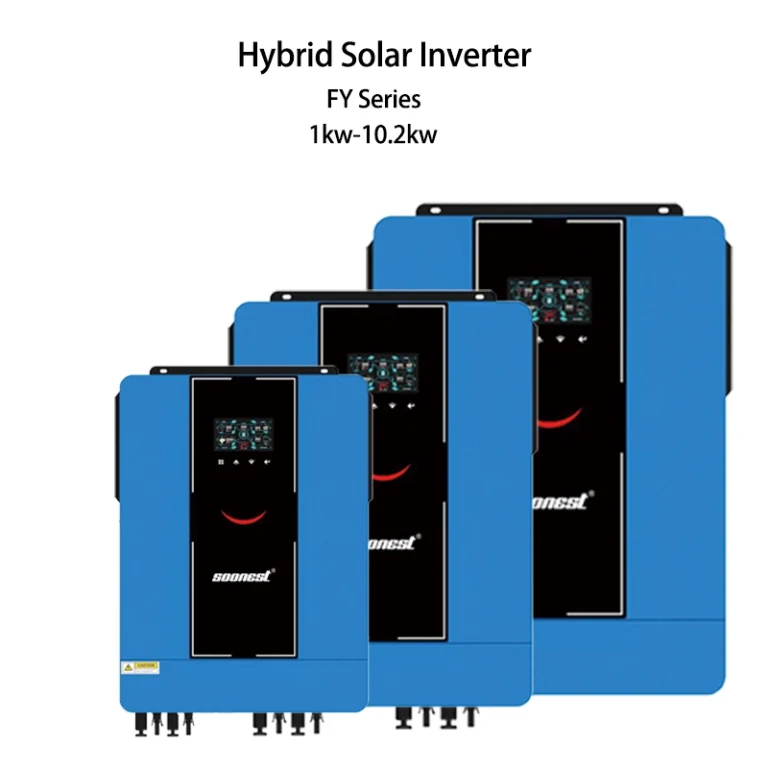Solar hybrid inverters are amazing tools that bring clean energy to homes and businesses. They blend solar power, batteries, and grid electricity to keep solar energy home appliances running smoothly. The Soonest Solar Hybrid Inverter MY Series 1kw-10.2kw Single Phase 220V is a great example. It combines smart features and strong design to make the most of solar energy. This article dives into how these units work, their key parts, and new trends that boost power and reliability for solar energy home appliances.

Battery Management Systems in Hybrid Inverters
Battery management systems (BMS) are key for solar hybrid inverters. They keep energy storage safe and working well. A BMS watches battery charge, heat, and health. It stops overcharging or too much draining, which can shorten battery life. The MY Series has a clever battery charger setup. This boosts battery work and stretches its life with tricks like battery balancing. This is super important for off-grid setups. There, steady energy storage is a must for solar energy home appliances.
Role of Microcontrollers in Solar Inverter Operations
The Brain of the System
Microcontrollers are like the brain for solar hybrid inverters. They run simple rules to control power changes, handle energy sharing, and keep things steady. Smart microcontrollers track and fix things in real time. They adjust based on weather or power needs. With these bright parts, modern inverters tie in smoothly with other green energy setups or grid lines. This helps solar energy home appliances run without a hitch.
Advanced Features in Solar Hybrid Inverter Hardware
Integration with Smart Grid Systems
Tying into smart grid systems is a big deal for top-notch solar hybrid inverter designs. These let energy flow both ways between homes and power grids. Extra solar power can go back to the grid for credits. Or, it can be saved for busy times. This setup boosts energy use and cuts need for old-style power sources. It’s a handy way to power solar energy home appliances wisely.
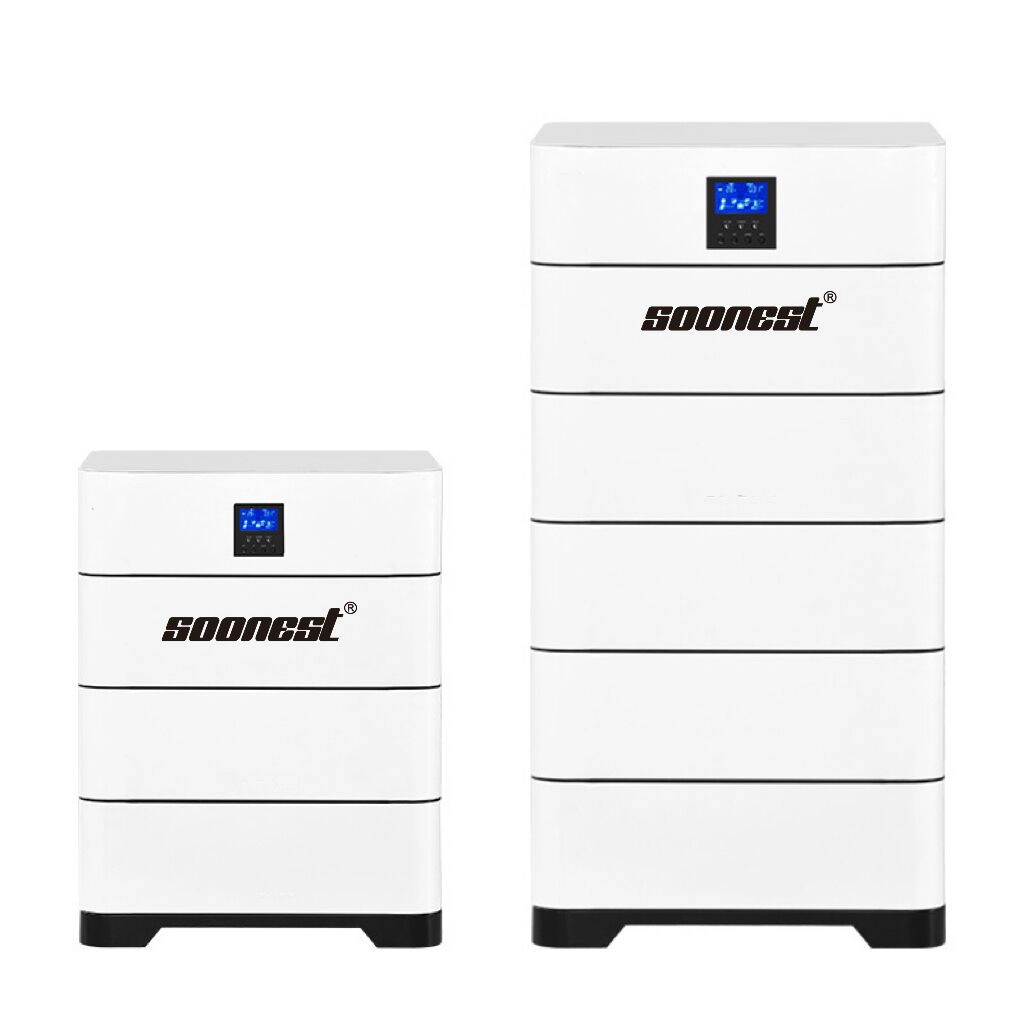
Monitoring and Remote Control Capabilities
Today’s solar hybrid inverters come with neat tracking and control options. Users can check energy making, use, and storage on phone apps or web pages. For example, the MY Series lets you set input voltage through LCD controls. You can adjust it to fit specific solar energy home appliances. These tools make it easy and keep the system running great.
Adaptive Algorithms for Load Management
Smart rules built into solar hybrid inverters handle energy sharing well. They focus on key needs during power dips. Or, they spread energy based on live use patterns. These tricks keep vital solar energy home appliances going strong. They also make the whole system work better.
Efficiency Optimization in Popular Solar Hybrid Inverter Design
Thermal Management Techniques
Keeping things cool is vital for solar hybrid inverters. Good heat control—like heat sinks, fans, or special cooling materials—stops overheating. Overheating can hurt performance or break parts. Dust-proof designs also help. They shield inside bits from dirt and grime. This keeps solar energy home appliances running smoothly.
High-Efficiency Power Electronics Components
Using top-notch power parts cuts energy waste during changes. New materials like silicon carbide (SiC) or gallium nitride (GaN) are better than old silicon ones. They carry power well and handle heat nicely. These allow faster work and less loss when switching. This helps solar energy home appliances get steady power.
Reducing Energy Losses During Conversion
Cutting waste during DC-to-AC change is a big goal for solar hybrid inverter design. Tools like MPPT make the most of solar power. They match panel output to the best conditions. The MY Series has auto-restart during AC pickup and cold start options. These keep things going in all kinds of situations. Such new ideas lift system power and help the planet. They lower the need for non-green energy for solar energy home appliances.
Compatibility with Solar Energy Systems and Home Appliances
Synchronization with Different Types of Solar Panels
Solar hybrid inverters work nicely with all sorts of solar panels. They aim for top energy change power. The Soonest Solar Hybrid Inverter MY Series 1kw-10.2kw Single Phase 220V uses MPPT technology. It shifts to match changing voltage and current from panels. This fits monocrystalline, polycrystalline, or thin-film types. Its wide PV input range of 30–400VDC makes it handy. It works for homes and businesses alike, powering solar energy home appliances well.
Supporting Various Home Appliance Loads
Modern solar hybrid inverters are built to handle many solar energy home appliances. They run delicate gadgets like computers and big ones like fridges or air conditioners. The MY Series lets you set voltage with LCD controls. You can tweak it for specific needs. Plus, its clean, smooth output keeps even touchy devices safe. This flexibility is key for homes wanting less grid power. It keeps solar energy home appliances running without breaks.
Handling Fluctuations in Energy Demand
Shifts in energy needs can be tricky for green power setups. Solar hybrid inverters tackle this with smart energy-sharing rules. They focus on key needs during busy times or power drops. Features like auto-restart during AC pickup and cold start keep things steady. These boost trust in the system. They also match supply to live demand, helping solar energy home appliances stay on.
Emerging Trends in Solar Hybrid Inverter Hardware Development Consideration
Incorporation of Artificial Intelligence in Inverter Systems
Adding artificial intelligence (AI) to solar hybrid inverters is a game-changer. AI rules guess energy use and making ahead of time. This lets users tune systems early. AI studies past data and weather to spot busy or low solar times. It adjusts the setup to match. This smart move lifts power and cuts costs for solar energy home appliances.
Advances in Battery Technologies for Enhanced Storage
New battery ideas are shaking up solar hybrid inverters. They boost storage power and life. The MY Series uses clever battery management to check charge, heat, and health. It stops overcharging or too much draining. New types like lithium iron phosphate (LiFePO4) hold more power and charge fast. They’re safer than old lead-acid ones. These changes store more energy for longer, keeping solar energy home appliances ready even with little sun.
FAQ
- How does a hybrid solar inverter handle power outages?
Hybrid inverters switch fast to battery or solar power when the grid goes down. This keeps vital solar energy home appliances going. The Soonest MY Series has backup modes and quick switch times. It runs smoothly every time.
- Can I expand my hybrid inverter system later?
Yes! Many hybrid inverters, like the Soonest MY Series, allow extra connections for more power. You can add battery banks or solar panels, too. This grows energy storage and making for solar energy home appliances.
- Are hybrid inverters compatible with existing solar setups?
Most hybrid inverters fit standard solar panels. But, you might need tweaks for voltage matches. Check details like PV input range. Or, ask a tech expert to tie it in with older systems for solar energy home appliances.

